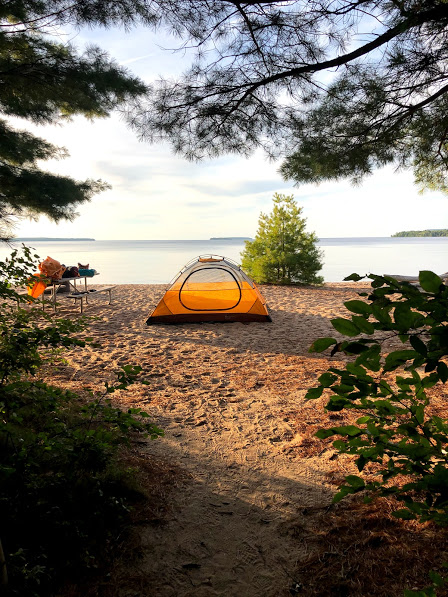One of the most empowering experiences of my entire life was a solo 6-day camping and hiking trip I took in Michigan’s Upper Peninsula the summer I turned 42.
Daily hikes and outdoor experiences were a regular part of my life when I was a kid, but as an adult, those jaunts into the forest became less and less frequent. The day-to-day stresses of raising a crew of small children kept me mostly indoors for over a decade, and it wan’t until they were much older that I realized how much I missed regularly getting into nature.
I hate to admit it, but I’d also fallen into an all-too-common dynamic where I was “waiting for permission” to advance my desire for outdoor adventure. I was ignorant about how to choose and use gear, and after years of living a mostly-indoorsy lifestyle, I was timid about the prospects of getting outside again.
It wasn’t until after I divorced that I realized that if this was something I wanted, I had to take the initiative and do it for myself.
The summer after my divorce, I signed up for a beginner’s backpacking trip with Wanderlust Outfitters. Within the structure of their guidance, my doubt melted away. Our trip consisted of a 6-mile hike (with borrowed gear) on the North Country Trail in the Manistee National Forest, an overnight stay in a rustic campsite, and a 2-hour paddle down the Pere Marquette River (which turned out to be anything but tranquil that day!)
Upon returning home, I immediately purchased my own backpack, and realized I’d been fully bitten by the adventure bug. After that, hiking and camping trips just became a normal part of my outdoors experience.
In the summer of 2019, I planned a solo hiking and camping trip in the Upper Peninsula. I camped three of the nights, and stayed in AirBnbs and one unexpected hotel stay the other nights (more on that below). I kayaked, hiked somewhere between 60-70 miles, and saw some gorgeous scenery.
And I did it by myself.
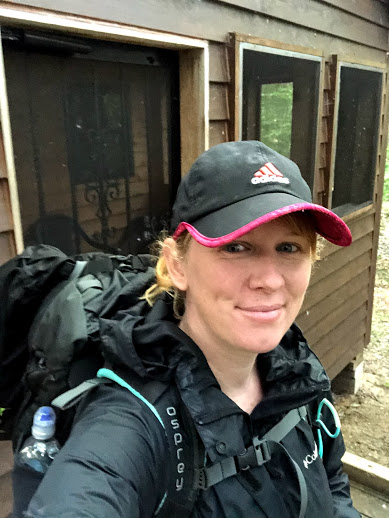
As I mentioned, this was one of the most empowering experiences of my life, but I got there via a series of baby steps. The path has been slow and steady, but every step has been full of learning and fun.
Here are some tips to keep in mind as you’re planning your own solo hiking and camping trip:
- ease in.
I didn’t just wake up one day and say “You know what I think I’ll do? Hit the road solo for a week!” The practice trip I mentioned gave me the first real sense of yes, I can do this, but I continued to get out there in small ways on my own, testing out my gear and trying new things: new terrain, new distances, new gadgets.
Speaking of gadgets and gear, I added to my collection a little at a time, as the need came up for specific items (outdoors gear can get quite expensive, so it makes sense to take your time – we’ll dive more into gear later.)
Lean on other people as much as possible. Outdoorsy folk tend to be eager to talk about it and happy to share their knowledge with you, and little experiences can build on one another.
For example, I went on a few dates with a guy who was really into ultralight backpacking. The relationship never turned romantic, but he showed me how to pack for the trail and took me on a dry run in the dunes of a local state park, where we set up “camp” and cooked a meal before we had to high-tail it out of the woods before the rangers kicked us out at 10 PM.
After that, I had the confidence to suggest a two-night trip to a hike-in backwoods camping area along Lake Michigan with my sister-in-law Jenna, nephew, and two youngest sons. We learned a lot in a relatively safe environment as we were “only” a couple of miles from the car and could hike back for extra water or food – or bail entirely if the weather got too bad.
The following spring, I went on a weekend hiking trip solo (well, plus my dog) in a cabin in the woods a few hours north to see how I’d handle being in a remote area alone at night.
And all along, I was reading, taking solo day hikes when I could, and talking to the folks at my local outfitter to learn more.
Later that summer, after a fun but hectic multi-family camping trip in the Upper Peninsula, I decided I wanted to return and hike the Pictured Rocks National Lakeshore alone, and the trip was planned within hours. It may have seemed like a split-second decision…but it was years in the making.
Take your time. Practice. Talk to people. Read. Practice more. Have fun!
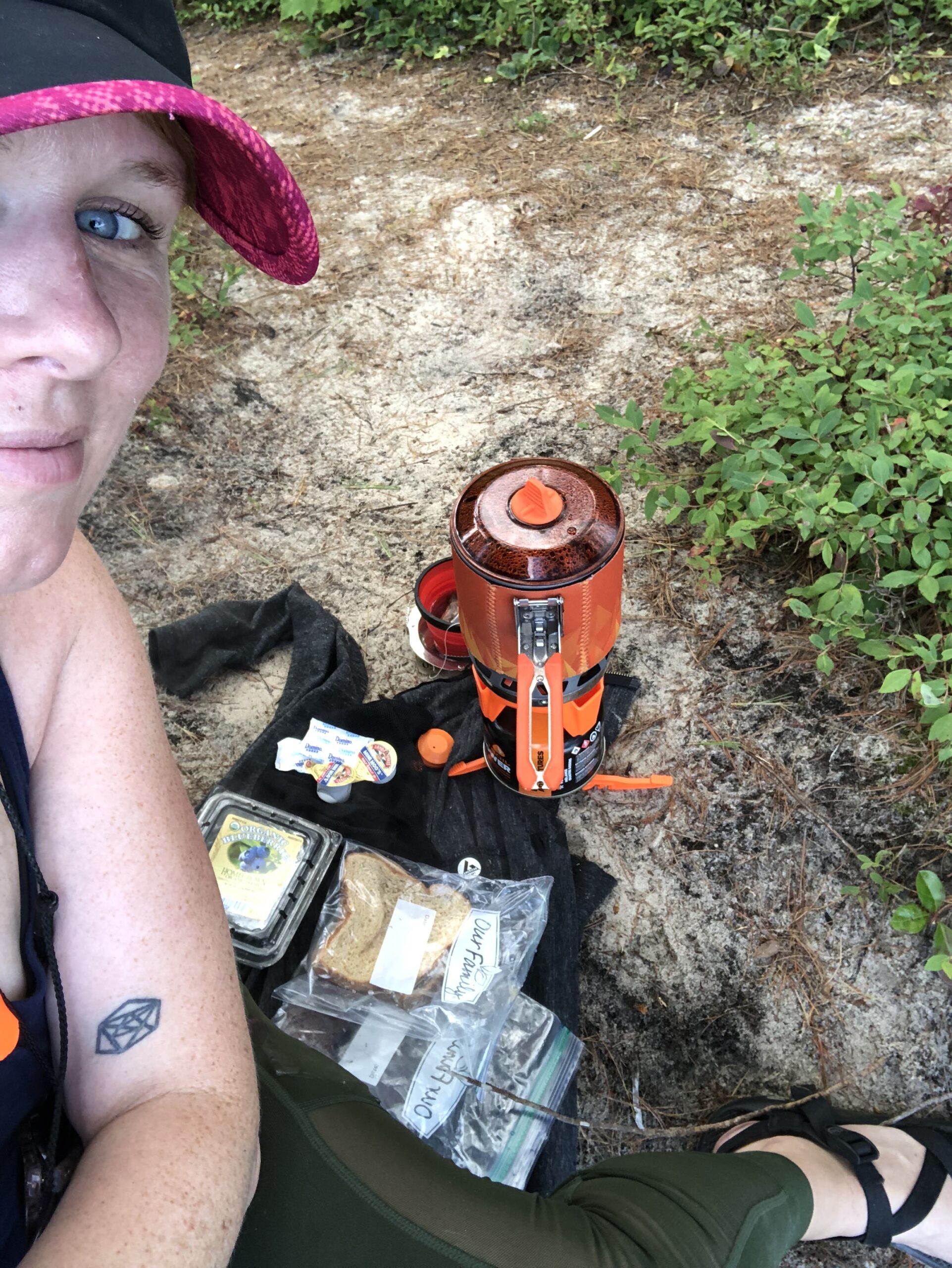
2. get the right gear.
Which doesn’t necessarily mean “all the gear”, or “only the most expensive gear”, mind you. How much stuff you need and what you’ll want to spend on it is totally dependent on your goals, your budget and what’s important to you. It can also grow over time. My gear stash is constantly evolving to suit my ever-changing needs and outdoors goals.
It’s overwhelming to just start searching online, so again, I highly recommend developing a relationship with a quality outfitter, or even a friend who can walk you through what you really need and maybe let you try out their gear.
Unless your budget is endless, it’s also important to prioritize. Early on I decided that foot and back comfort were really important to me, so I was willing to spend a little more on good boots, a high-quality backpack, and a sleeping bag that would keep me comfortably warm.
On the other hand, I’m the kind of person who can happily eat peanut-butter sandwiches for days, so I waited a bit longer to buy a camp stove and didn’t splurge on the fanciest one. Right now I only camp in the summer and fall, so I didn’t need a sleeping bag with a super cold-weather rating, and I still use a relatively inexpensive tent. You can find out more about what I use on hiking and camping trips (and where I plan to upgrade) in my basic gear guide.

3. plan ahead & be traceable.
I’m normally all about spontaneity, but when I found myself in the middle of a remote forested dune system with 100 miles of hiking trails and spotty phone service, I was glad I’d done my research.
Before my trip I’d spent hours downloading and researching maps, and had made a detailed plan, which I shared ahead of time with friends. I also checked in with friends back home at the beginning and end of each day to let them know my plans for that day and to let them know I was OK at the end of it. When I interacted with other humans (which on some legs of the trip were rare), I made sure to let them know where I was going. I left written accounts of my daily itineraries at my lodging/campsites and in my car.
In other words, I made myself as traceable as possible.

I also got in the habit of checking and double-checking my pack before leaving the trailhead – every time. You don’t want to be five miles from your car and then realize you forgot to put your water bottle back in your pack when you were rummaging around looking for your bug spray. I tend to get scattered when feeling overwhelmed, and a series of checks and balances kept me from making major flubs on more than one occasion.
4. consider tradeoffs & change plans if needed.
Once you’ve gotten the intoxicating first taste of freedom and adventure, it’s tempting to load up on as many challenges as you can possibly stuff into your day. But don’t forget that, especially if your trip is longer than a day or two, you’ll want to be able to sustain your enthusiasm and enjoyment. You’ll also want to live to tell about it. ‘
On at least two occasions during my trip I made a snap decision to stray from my original plan and was glad I did. Two tradeoffs to keep in mind:
adventure vs. comfort:
One day I spent hours in the drizzling rain on a guided kayak tour of Lake Superior. The tour was amazing, and the rain wasn’t really that cold as long as I was actively paddling.
But when I thought about my plans to camp that night, I started having doubts. It would be after sundown by the time I got to my site, so I’d be pitching my tent, by myself, in the rain, after dark, with no ability to build a fire. Already soaked, I couldn’t see how I’d ever get fully dry, and anticipated a cold, miserable night…so I booked a hotel room instead.
Sure, I could have camped, but that level of discomfort sounded less like adventure than torture, and I didn’t have to prove anything to anyone. I decided to give myself a break for one night so I could enjoy a dry sleeping bag for the rest of my trip.
Other tradeoffs in this category come into play when you’re doing hike-in camping, since every pound of gear you add to your pack is one more you have to carry on your back. Sometimes, that tradeoff is totally worth it; other times, you’ll opt for less comfort in the tent for more ease on the hike.
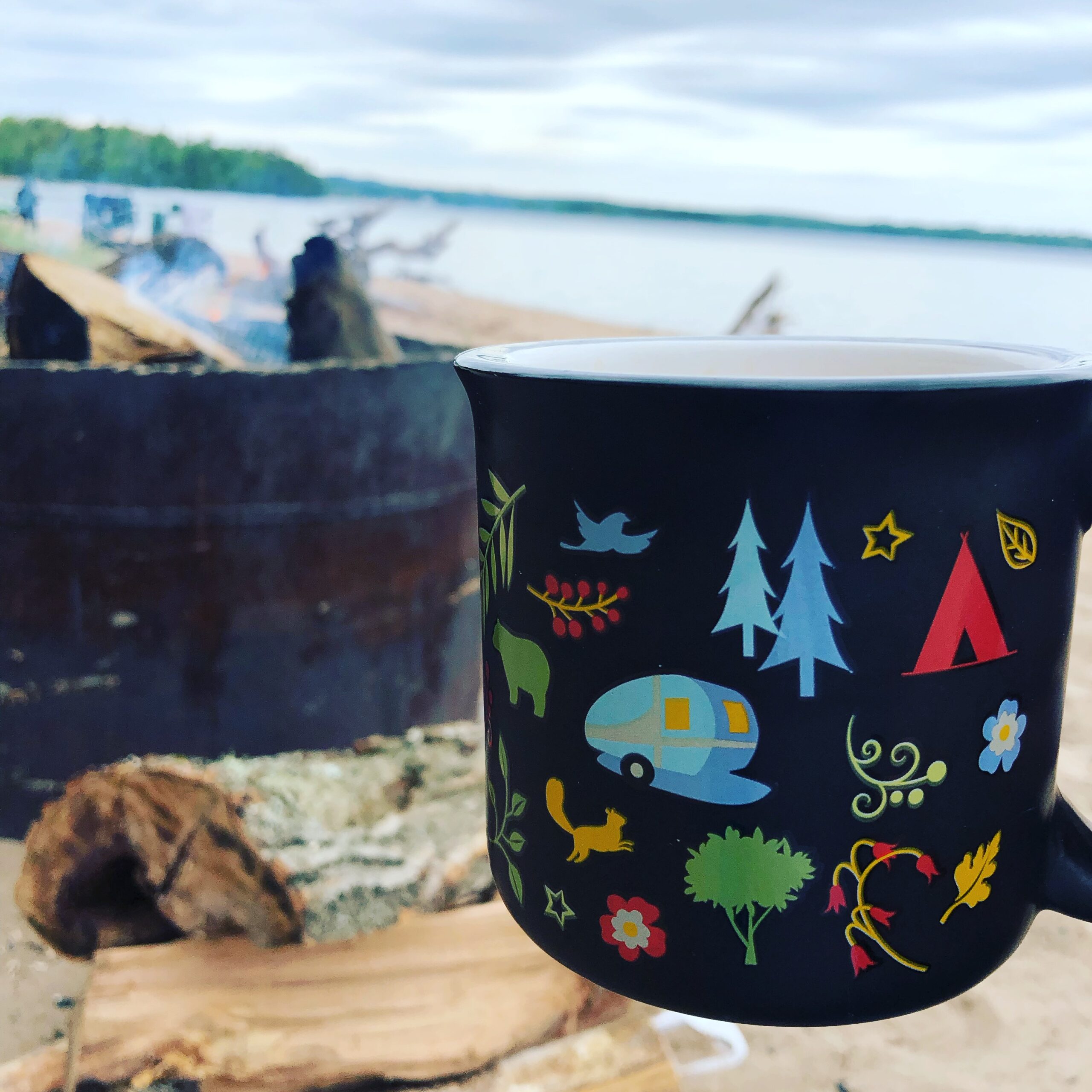
risk vs. reward:
At another point of the trip, I had booked a paddle-in campsite on an inland lake. As an enthusiastic kayaker I was really excited about that challenge…but when I went to the lake, I realized it was a lot larger than I’d anticipated, and the entire shoreline looked to be densely covered with trees and foliage.
I drove to the park headquarters to ask how I’d actually find my campsite once in the kayak, and the directions I got were rather vague. I returned to the lake, and while surveying the shoreline again, the sky went suddenly dark and the wind whipped up.
At that moment I knew: I was in over my head. As cool as it would have been to camp on that lake, the risk of doing it alone, in bad weather, with basic skills and spotty cell service – combined with the possibility of flipping my kayak, breaking an ankle in the woods, or some other random mishap – just wasn’t worth the reward. And that’s OK. Now that I know it’s there, I will for sure go back – with a partner next time.
5. set daily priorities.

Since my trip was on the longer side, I knew I’d be able to fit in a few different kinds of experiences (playing tourist in town, hiking the trails, kayaking, rustic camping adventure, etc) over the week, but that it would be very hard to enjoy more than one kind of experience in a single day.
Hiking 30 miles in 24 hours is one thing when you know you have a cabin to stash your stuff in and retreat to at the end of the night, as I did on Grand Island near Munising, MI. It’s a very different story if you’re attempting to carry all of your gear on your back and will be setting up camp somewhere along the trail. Especially when you’ll be alone.
I decided to give each day a priority – hiking, camping, kayaking, tourist-ing, etc. – and build the day’s itinerary (as well as my sleeping situation) around that activity.
On heavy hiking and paddling days, I chose easier lodging. That helped me not feel too overwhelmed, especially since it was my first solo trip.
Was it worth it?

Absolutely.
In planning and embarking on my trip, I proved to myself that I can do things I once would have found too intimidating. I realized that I can learn new things and develop new skills, even in my 40s and beyond. And I learned that life is about constant reinvention, with many opportunities to get back in touch with the person you once were.
When I had five small children under my care, this kind of adventure simply wasn’t in my line of sight – and that’s OK. There are many seasons in a typical lifetime, and what you can’t get to right now, you may have an opportunity to sooner than you realize. Just keep dreaming.
Was it scary?
A lot of people asked me if I was ever afraid on my trip. Looking back, I can honestly say the only time I was truly scared was the night I stayed in a 100+ year old hunting cottage while touristing in Grand Marais, a tiny town on the eastern edge of Pictured Rocks. I don’t know if the cottage was haunted or what, but I woke up with a start at 4 AM, so freaked out I had to read for two hours to put myself back to sleep.
Otherwise, no, I was really never afraid, even with all the time I spent alone in the forest. There were moments when I felt a little on-edge, like when I missed a turnoff and realized I’d hiked two or three miles in the wrong direction. But I think of those little moments less as fear than hyper-alertness – not a bad thing, just the awareness of potential danger that helps keep you safe.
Before I left on the trip, one of my biggest fears is that I would encounter a bear. By the last day, I was kind of disappointed that I hadn’t. Being alone for days on end, surrounded by forests and water, with limited connection to other humans has a way of changing your perception of danger. I would say I was more nervous in certain situations around other people than I was when surrounded only by wildlife.
Would I do it again?
Yes!!…with a caveat. I learned I like being alone for a day or two at a time, and find a short period of solitude to be a nice reset. But I’m also an extrovert, and being completely alone in the woods for more than a couple days at a time proved to be a little more isolation than I’d like. I would definitely travel alone again, but probably plan for more interaction along the way (even just going into town and chatting up locals at the bar felt like a treat after so much time alone.) I also realized some of the limitations hiking and camping alone can pose and would like to try some of the things that simply felt unsafe to do solo, but with a partner next time.
Case in point: last summer I returned to Pictured Rocks with my sister, and my brother met us for a night on Grand Island a few days later. I loved getting to share everything I’d learned on my solo trip, but the enthusiastic company made the experience even richer.
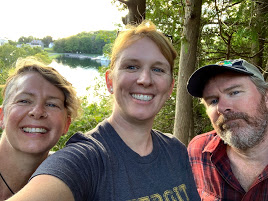
Again, I’m SO glad I went on a solo camping and hiking trip! I learned a lot about myself, my abilities, and what is really important to me – and I now have the confidence to face bigger and broader challenges.
If a solo adventure is calling to you, go for it! Just start small, make a plan, ask lots of questions, and be prepared to change your itinerary when it makes sense. Look up some easy hikes in your area, get in touch with a local outfitter, and check out my basic gear list if you’re ready to start dreaming.
You can do this!
